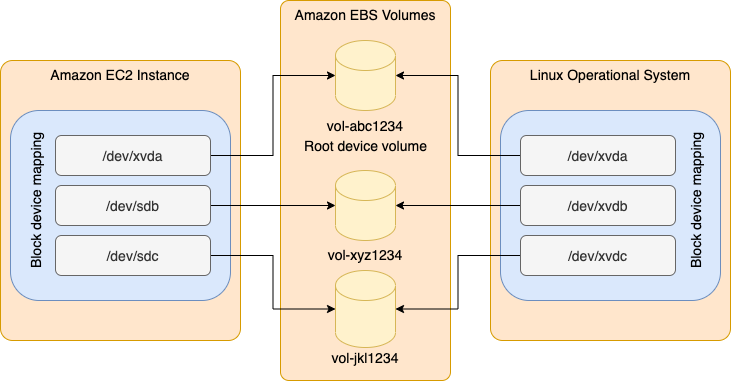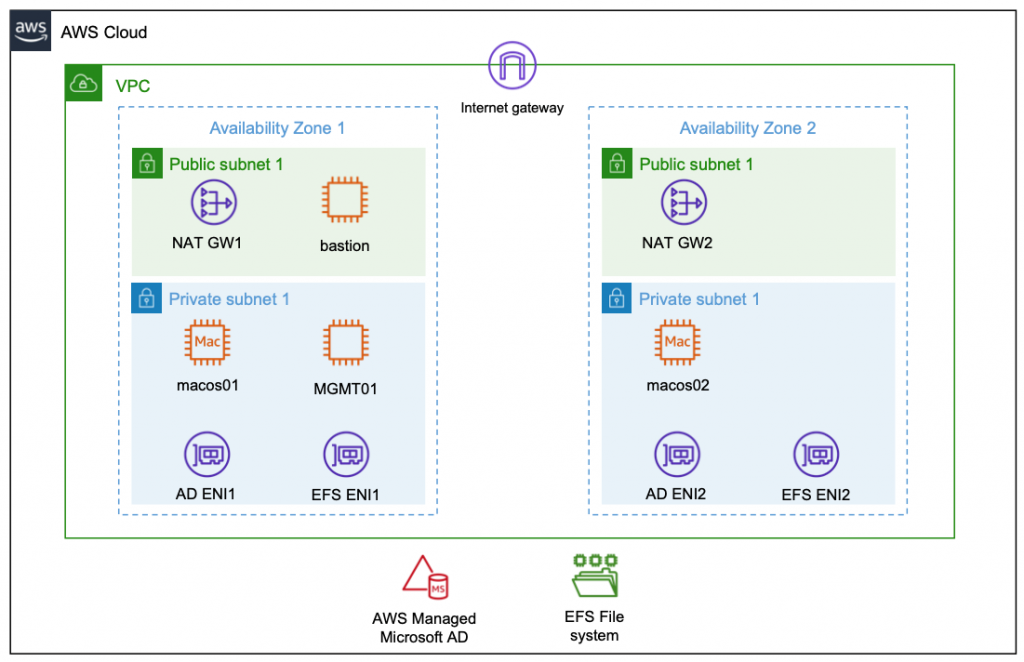AWS Compute Blog
Tag: Compute
How to mount Linux volume and keep mount point consistency
This post is written by: Leonardo Azize Martins, Cloud Infrastructure Architect, Professional Services Customers often use Amazon Elastic Compute Cloud (Amazon EC2) Linux based instances with many Amazon Elastic Block Store (Amazon EBS) volumes attached. In this case, device name can vary depending on some facts, such as virtualization type, instance type, or operating system. […]
Setting up EC2 Mac instances as shared remote development environments
This post is written by: Michael Meidlinger, Solutions Architect In December 2020, we announced a macOS-based Amazon Elastic Compute Cloud (Amazon EC2) instance. Amazon EC2 Mac instances let developers build, test, and package their applications for every Apple platform, including macOS, iOS, iPadOS, tvOS, and watchOS. Customers have been utilizing these instances in order to […]
Getting Started with Anka on EC2 Mac Instances
This post is written by Scott Malkie, Specialist Solutions Architect, EC2 At re:Invent 2020, we announced Amazon EC2 Mac instances, which enable you to run on-demand macOS workloads in the AWS Cloud for the first time. Apple developers can now benefit from the scalability, elasticity, reliability, and security of the AWS Cloud and the AWS […]
Scaling your applications faster with EC2 Auto Scaling Warm Pools
This post is contributed by Scott Horsfield, Principal Solutions Architect for EC2 Scalability, Surabhi Agarwal, Senior Product Manager for EC2 Auto Scaling, and Chad Schmutzer, Principal Developer Advocate for Amazon EC2. Customers have been using EC2 Auto Scaling to architect sophisticated, scalable, and robust applications on the AWS Cloud for over a decade. Launched in […]
Proactively manage the Spot Instance lifecycle using the new Capacity Rebalancing feature for EC2 Auto Scaling
By Deepthi Chelupati and Chad Schmutzer AWS now offers Capacity Rebalancing for Amazon EC2 Auto Scaling, a new feature for proactively managing the Amazon EC2 Spot Instance lifecycle in an Auto Scaling group. Capacity Rebalancing complements the capacity optimized allocation strategy (designed to help find the most optimal spare capacity) and the mixed instances policy […]
Optimizing deep learning on P3 and P3dn with EFA
This post is written by Rashika Kheria, Software Engineer, Purna Sanyal, Senior Solutions Architect, Strategic Account and James Jeun, Sr. Product Manager, and Amr Ragab The Amazon EC2 P3dn.24xlarge instance is the latest addition to the Amazon EC2 P3 instance family, with upgrades to several components. This high-end size of the P3 family allows users to […]
Automating your lift-and-shift migration at no cost with CloudEndure Migration
This post is courtesy of Gonen Stein, Head of Product Strategy, CloudEndure Acquired by AWS in January 2019, CloudEndure offers a highly automated migration tool to simplify and expedite rehost (lift-and-shift) migrations. AWS recently announced that CloudEndure Migration is now available to all customers and partners at no charge. Each free CloudEndure Migration license provides 90 […]
Introducing the capacity-optimized allocation strategy for Amazon EC2 Spot Instances
AWS announces the new capacity-optimized allocation strategy for Amazon EC2 Auto Scaling and EC2 Fleet. This new strategy automatically makes the most efficient use of spare capacity while still taking advantage of the steep discounts offered by Spot Instances. It’s a new way for you to gain easy access to extra EC2 compute capacity in […]
Using Cromwell with AWS Batch
Contributed by W. Lee Pang and Emil Lerch, WWPS Professional Services DNA is often referred to as the “source code of life.” All living cells contain long chains of deoxyribonucleic acid that encode instructions on how they are constructed and behave in their surroundings. Genomics is the study of the structure and function of DNA […]





